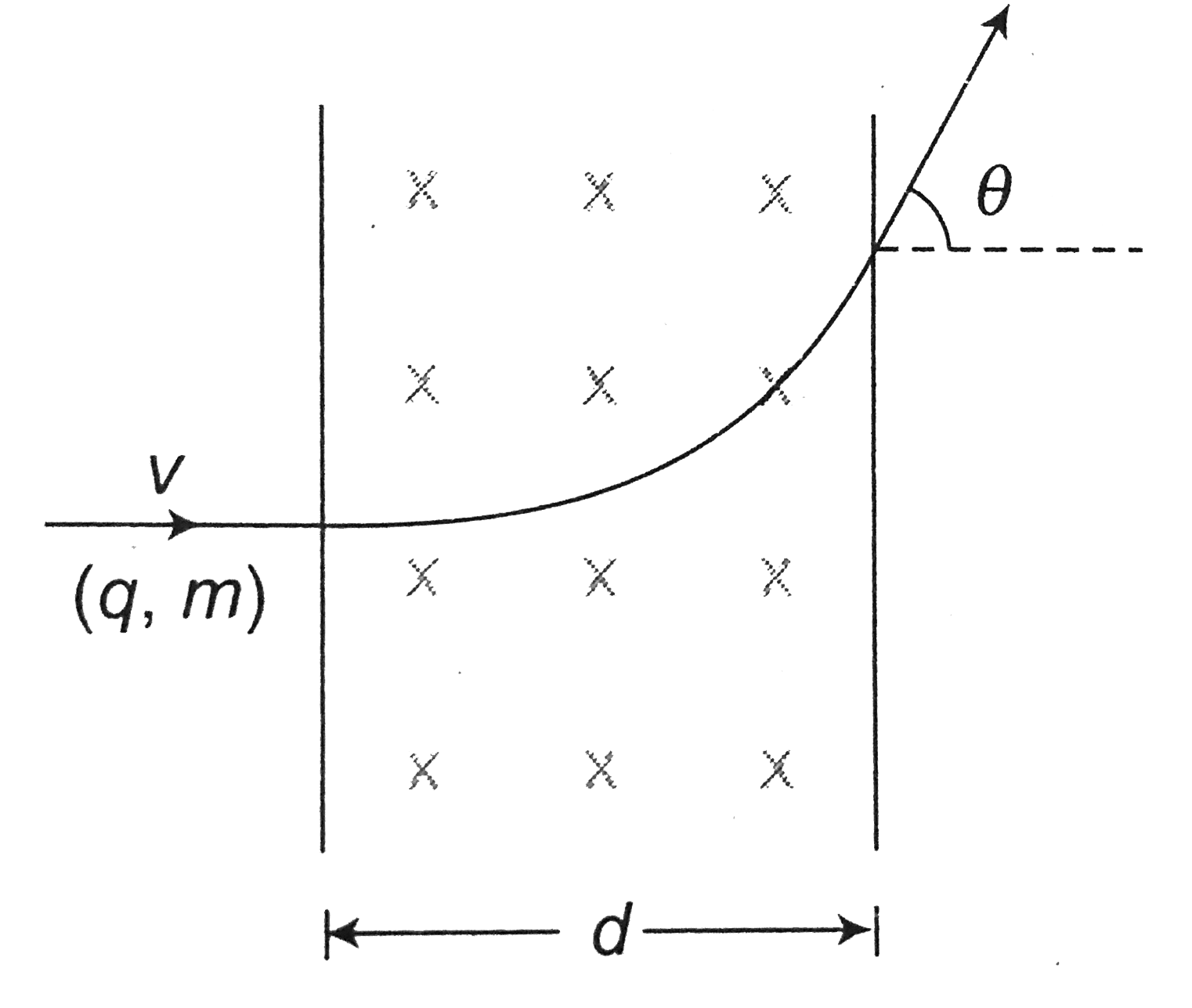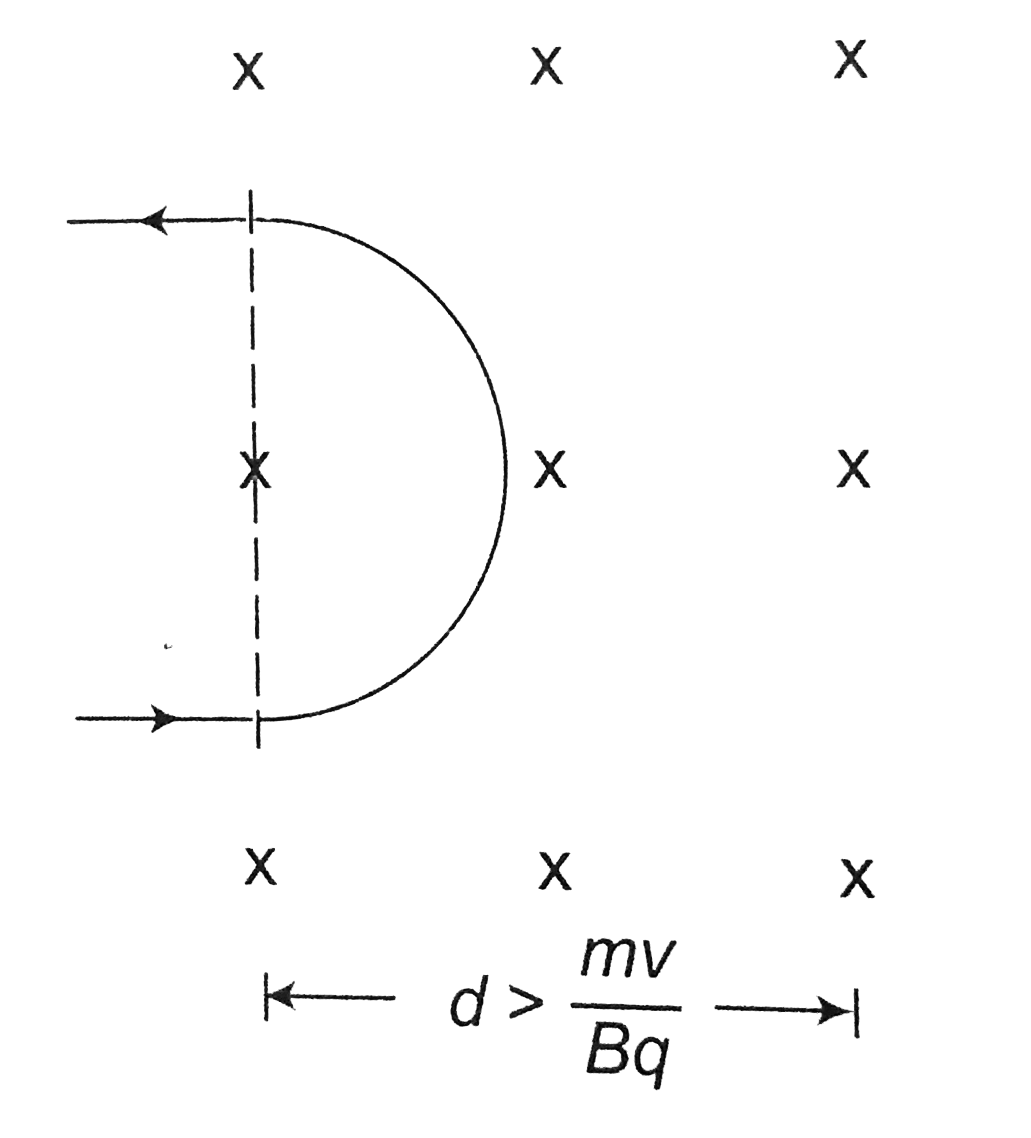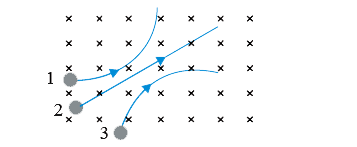A charged particle (q,m) enters perpendicular in a uniform magnetic field B and comes out field as shown. The angle of deviation θ time taken by particle to cross magnetic field will be

Video Solution
Text Solution
The magnetic force F is ⊥ar to v as well as B, since v is ⊥ar to B, charged particle will below circular path inside magnetic field.

AB is circular arc, sketch two tangent lines at A and B, if we make perpendicular lines on tangent lines passing through A and B, these perpendiculars will meet at centre O of circle.
Here, θ: angle of deviation.
In ΔOBC
sinθ=dR=dmv/Bq=Bqdmv
θ=sin−1(Bqdmv)
Time-period T=2πmBq
Time to travel circular arc of angle θ
t=2πmBq.θ2π=mθBq,θ: in radian
Deflection ⊥ar to initial motion dierction:
AC=R−Rcosθ=R(1−cosθ)
=R[1−(1−2sin2θ/2)]=2Rsin2(θ/2)
If θ is small, sinθ≅θ=d/R
AC=2R(θ2)2=2R(d2R)2=d22R
sinθ=Bqdmv
(sinθ)≤1 i.e. d≤R(=mvBq)
This formula is valid ifd≤R(=mvBq)
If d>R(=mvBq), the particle enters and emerges from same side.

|
Updated on:21/07/2023
Topper's Solved these Questions
Similar Questions
Knowledge Check
- Question 1 - Select One
If a charged particle enters perpendicular in the uniform magnetic field then
AEnergy remains constant but moment changesBEnergy and momentum both remains constantCMomentum remains constant but energy changesDNeither energy nor momentum remains constant - Question 2 - Select One
A charge particle is moving in a plane perpendicular to uniform magnetic field, then
AIts momentum changes but kinetic energy remains the sameBBoth momentum and kinetic energy remain the sameCBoth will changeDKinetic energy change but momentum remains the same - Question 3 - Select One
If a charged particle is a plane perpendicular to a uniform magnetic field with a time period T Then
AT2∝r3BT2∝rCT∝r2DT∝r0
A charged particle enters into a uniform magnetic field the parameter that remains constant is
View SolutionParticles 1, 2 and 3 are moving perpendicular to a uniform magnetic field, then particle
 View Solution
View SolutionWhen a charged particle enters a uniform magnetic field its kinetic energy
View SolutionWhen a charged particle enters a uniform magnetic field its kinetic energy
View SolutionA charged particle enters a uniform magnetic field perpendicular to it. The magnetic field
View Solution
